Grey water threatens to blacken the image of RV travellers, and for good reason. You see, when it comes to grey water, it’s not black and white!
There’s no getting around our dependence on water, and from the beginning the storage and use of it has been a problem for every traveller. But while Burke and Wills had problems, environmental health wasn’t one of them and they just disposed of whatever they used by the side of the track.
What was acceptable in the past when it was just one or two of us can’t work with today’s hordes of travellers, and in fact this point was made to us quite frequently by the likes of park owners. So for the good of society we all need to act responsibly, and water management is a big part of ethical travel.
What is black and grey water?
Black water is the nasty stuff from the toilet, and grey water is from laundry, shower, kitchen and other wet areas. The two are kept separate in your RV, but mixed in the dump point as they would both be going down your sewage pipes at home.
Why waste water disposal is a problem
Human health: black water is an obvious problem; we don’t want to indirectly ingest human excrement as it carries with it diseases ranging from a mild tummy upset to life threatening. And if grey water is stored for longer than 12 to 24 hours it breeds toxic levels of bacteria, and is classed as black water.
Pests and diseases: pests are attracted to dirty, stagnant water and waste, and you can work out what happens from there.
Contamination of waterways: both black and grey water must be prevented from entering any waterway as the downstream effects include poisoning aquatic life and excess nutrients leading to algal blooms, which has other undesirable
knock-on effects, plus contamination of swimming areas, drinking water and fish stocks.
Smell: you know it!
Ugliness: imagine a pristine remote area or caravan park with smattering of an inconsiderate person’s food scraps and washing up water on the ground.
Flora: while a plant might tolerate occasional grey water drinks, the chemicals dissolved with it aren’t doing it any good in the long term.
Erosion: water dumped in the wrong spot impacts sites and access roads by making the ground soft so ruts develop, affecting other site users and nearby waterways.
What you have to do
Your three responsibilities as a traveller are; minimise water use, keep your waste water as clean as possible, and dispose of it responsibly.
Tips on minimising water use
- Utilise local water. That means caravan park showers, toilets, laundry, cooking and washing up facilities.
- Have fewer showers. Maybe just use antibacterial wipes to freshen up. Consider turning the water off while you soap, then rinsing. Long, hot showers … not in an RV. And what about a ‘dip’ in a river or the ocean?
- Don’t let taps run, e.g. when brushing teeth.
- Use shower water to wash your clothes.
- Consider using grey water to flush the toilet – this may require a re-plumb.
- Steam instead of boiling veggies. It’s healthier anyway.
- Do water-intensive cooking away from your RV.
- Hot water systems can take some time and waste water in the process of getting up to temperature. If washing up dishes boiling a kettle can save you a bit of water.
- Giving your dishes a good scrape to remove food scraps minimises the water required for washing up.
Tips on keeping your water clean
- Minimise food scraps. Wipe plates completely clean before washing and rinsing. Reusable cloths and old newspapers work well rather than constantly buying paper towel and it’s better for the environment. Use a filter of some description when emptying your grey water – a fine mesh or an old stocking work a treat. The scraps collected can be emptied into your garbage.
- Collect fats and oils. Large amounts of cooking fats and oils don’t belong in grey water either. Some might like to recycle for further cooking, otherwise collect in a sealable container and dispose of with your garbage. Fats and oils can reduce the effectiveness of a septic system and can cause damage to traps and pumping mechanisms and clog tanks with brown grease. If fats and oils make it onto the ground they won’t readily break down, leading to an unsightly film of grease on the ground.
- Use environmentally friendly agents. Opt for environmentally friendly, grey water friendly, septic friendly and biodegradable products for dishwashing, laundry, toilet cleaning and general purpose cleaning. Look for products that state that they are whole-product biodegradable to Australian Standard 4351 as ‘biodegradability’ is sometimes claimed on products where the one biodegradable ingredient makes up as little as 5% of the total.
- Don’t kill the bacteria. If you add detergents that aren’t septic-friendly you risk killing the bacteria in a septic tank at the dump point. A well-functioning septic system relies on the health of a community of bacteria to treat sewage, digesting and separating solid waste from liquid waste.
Responsible disposal
We’ve minimised water use, and made sure our waste water is clean. Now we need to dispose of it the right way. The sullage and dump points you will have come across in your travels are generally just the front end of a simple holding tank or septic system. In suburban locations they might be plumbed into the town sewerage system. They are designed to make it easy to pour a cassette or tote or connect your sewage hose, dump and then leave.
Black water: wait until you get to a dump point and empty your cassette, tote or tank. A much less messy option than leaving the task until you get home, and on trips longer than a weekend away you’re unlikely to be able to wait anyway. Only emergency situations would permit you to dig a deep hole out in the bush and bury it at least a metre deep, a long way from any waterways. For the clean down of the dump point entry there is often a provided hose. Also use the hose to rinse out your sewage hose as you want to minimise the chances of a leak and spillage of the contents in the container you have stored it in. Don’t ever use your food grade water hoses for the clean down.
Grey water: on a trip one site may have a dump point, the next may be comfortable with you drip releasing – literally drip-by-drip – your grey water on an appropriate piece of ground. Or they may be okay with you filling buckets and watering the vegetation, or may require you to be completely self-contained taking all waste water off-site for disposal and leaving no trace of your stay.
When we talked to the Campervan and Motorhome Club of Australia they spoke of the declining number of caravan parks and campsites yet more RVs on the road. The club advocates for self-containment wherever possible, with the view to dumping grey water at approved dump points over drip releasing, and this seems to be the majority view in the industry.
Like everything else when you travel, work it into your routine and it soon becomes second nature and takes no time at all, it’s just when it’s new that it seems bothersome. Yet we all really need to pay attention to environmental travelling ethics, as it’s either that or have our travel restricted.
Grey water and plants
There’s been a few studies on the subject and the general conclusion is a guarded “okay”. First off, it has to be fresh, clean grey water, which is not a contradiction in terms, it’s not grey water that has been stored for a while, just disposed of immediately after use. And if the grey water contains a lot of chemicals that can be a problem, whereas if there’s literally just dirt in it then that’s less of an issue.
Where to find a dump point
There are many more dump points than there used to be with around 450 subsidised by the CMCA (Campervan and Motorhome Club of Australia) and KEA Campers, and more than double that Australia-wide. The CMCA offers a GeoWiki app that has their locations listed.
The Leave No Trace scheme means that environmentally conscious members with vehicles that meet a specified holding capacity for fresh, grey and black water, as well as storage capacity for garbage waste can agree to abide by a code of conduct. All waste remains within the confines of the vehicle, and members agree to leave no trace whatsoever of their visit to a site and dispose of waste responsibly. In return members can display LNT certification on their vehicle and gain entry to controlled areas that would have otherwise been off-limits.
Campers, RVs and grey water
Every traveller will take water with them. The campers have it relatively easy, in a way. They don’t use much water, and tend to dispose of grey water immediately when used.
The bigger problem is caravans and motorhomes. In a modern RV, you feel like you’re in a house and tend to use water more freely.
Motorhomes have tanks which collect grey water for later disposal. That’s handy, but storing grey water for longer than 12 to 24 hours will turn grey water into black water. Caravans often don’t come with grey water tanks pre-installed for two reasons; the payload is small – usually less than 500kg even for large caravans – and water weighs 1kg per litre. The other reason is weight distribution, which is a major advantage of motorhomes over caravans. Caravans require their weight centrally over the axles, limiting where heavy objects can be placed. Motorhomes, with axles at either end, are far more tolerant of weight distributed around the vehicle, so it’s far easier to locate a grey water tank.





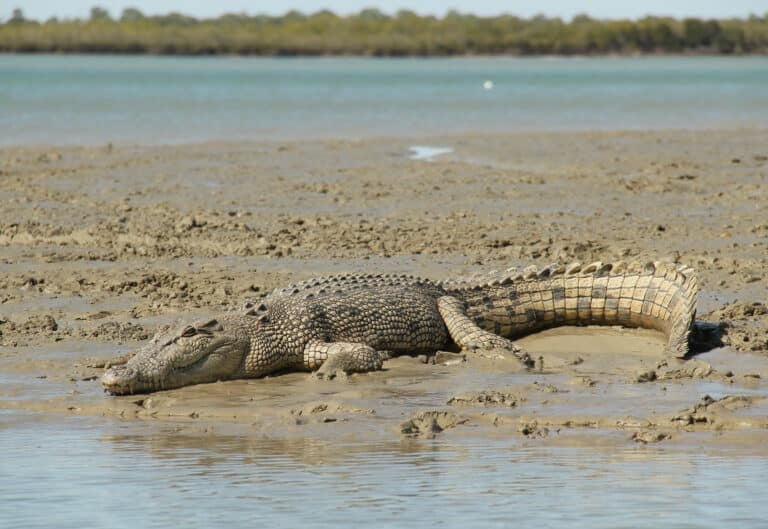
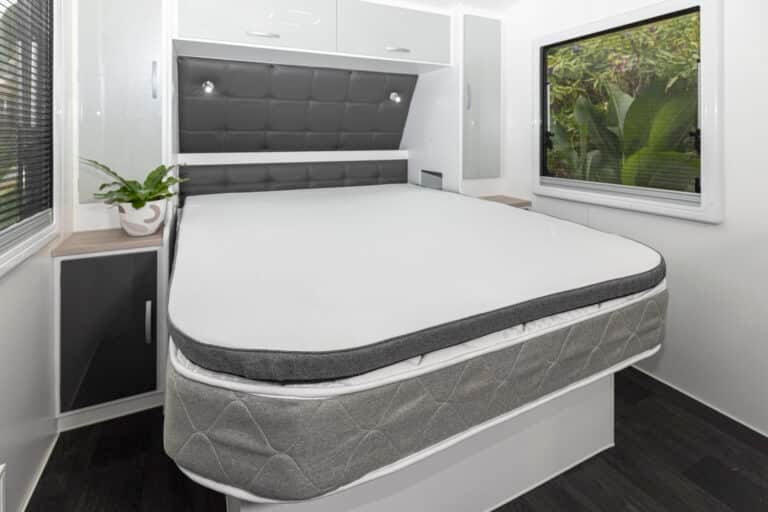
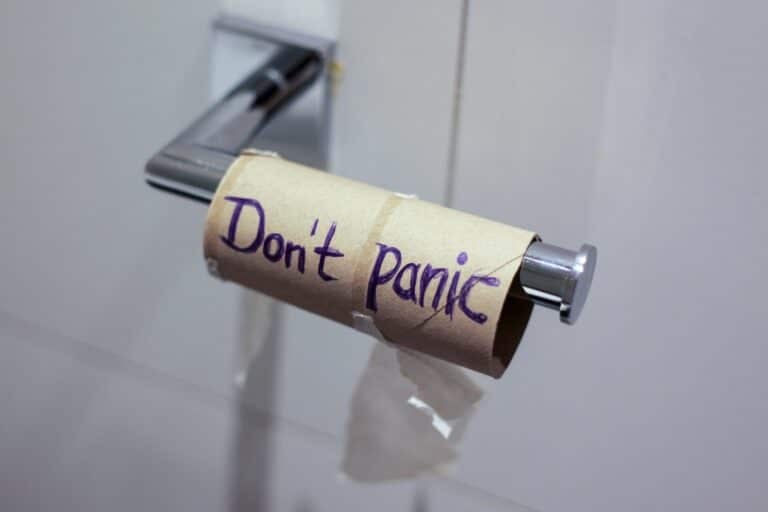

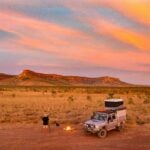


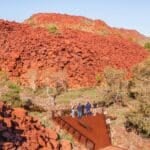
O.K i do not disagree , but tell me why my Daughter and I have just brought new caravans . They are set up to run sink and shower water to a hose which in a caravan park you put to the drain.
What if your a bush camper ?. they have 180 ltrs water tanks under neath , but cannot fit a collection tank for grey water ?
The industry is not fair dinkum , the regulators of caravan standards or toothless tigers in all respects .
So instead of constant reports like this lobby the Government instead , and no suggestions please that I carry a container, should have been on the new van , by regulation , when I purchased it 2 months ago.